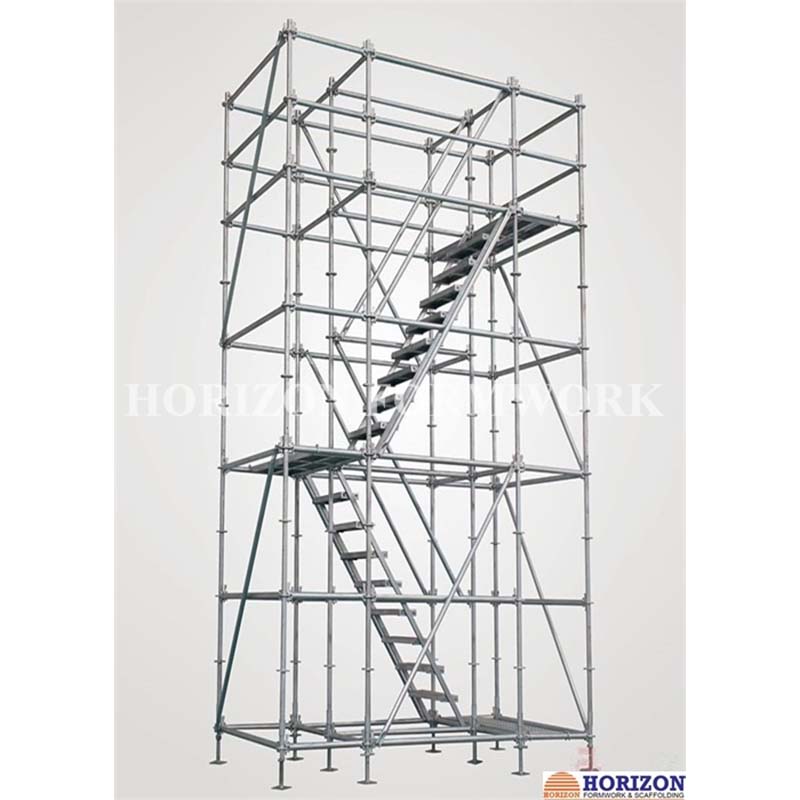Apr . 29, 2024 15:36 Back to list
Types of Scaffolds Scaffolding

What is a Scaffold?
Scaffolds are temporary structures built to help reach work areas that are well above ground level. Scaffolds can also be constructed as access platforms. According to the Occupational Health and Safety Administration (OSHA); a scaffold is “an elevated, temporary work platform” (n.d).
There are two major categories of scaffolds as explained below.
- Suspended Scaffolds – these are platforms that are hung from a permanent solid structure such as a roof and are supported by the use of strong rope, wire, or other similar flexible materials.
- Supported Scaffolds – these are platforms that are built with strong rigid ground supports such as brackets, poles, posts, legs, frames, outriggers, etc. These types of scaffolds can hold substantial weight. However, when designed and built, it important to ensure the structural supports are braced to avoid tilting, wobbling, or other movements.
Modern times have revolutionized and added to the types of supported scaffolds. Thus, specialized equipment such as aerial lifts and scissor lifts are now considered to be types of supported scaffolds.
Most of us have seen supported scaffolds in use, as these are commonly utilized by the construction industry to reach very high work areas and beyond the reach of construction workers standing at ground level. And, with the numerous high-rise buildings around, the sighting of the two-point suspended scaffold is not an unusual occurrence. Think of the window cleaner, or those workers cleaning the exterior of high-rise towers and buildings in any part of the world!
What is Scaffolding?
Isn’t a scaffold and scaffolding the same? Yes, it is often used interchangeably and as befitting the context requirements of a sentence. However, scaffolding also refers to the different parts such as platforms, poles, ropes, wires, ties, guys, connectors, etc.; that are put together to make a scaffold. Hence, when we speak of scaffolding, it can also mean all the components of a scaffold.
Ringlock Scaffolding System
Scaffolding Safety
People who work at heights will often talk about and hear about scaffolding safety. This is because OSHA has developed regulations and recommendations that employers (who expect employees to work on scaffolds) must follow. The aim is to provide detailed guidance on the safe and secure use of scaffolds to minimize the hazards associated with scaffold use. It must also be noted that the regulations aim to protect the safety and health of employees involved in erecting, disassembling, moving, operating, repairing, maintaining, or inspecting scaffolds.
The major hazards associated with scaffolds are falling, being struck by, electrocution, and scaffold collapse. Using guardrail systems, toe boards, fall arrest systems, ensuring scaffolds used are designed and build according to specifications, using recommended lumber and other platform materials, ensuring to maintain load capacity limits, undertaking regular inspections, and adopting other recommended safety measures will aid in protecting workers who use scaffolds to complete their work tasks, especially in the construction industry.
However, the subject of scaffolding hazards and safety measures to be adopted is a topic for another article. The rest of this article will focus on the different types of suspended and supported scaffolds available for use in various work environments and unique purposes.
-
Timber Beam H20 for Agricultural Buildings
LitabaJul.21,2025
-
Tie Rod Concrete Formwork for Bridge Construction
LitabaJul.21,2025
-
Table Formwork for Slab Edge Protection
LitabaJul.21,2025
-
Load Calculations for Wall Formwork System
LitabaJul.21,2025
-
Concrete Column Form Work Systems Productivity Tips
LitabaJul.21,2025
-
Beam Slab Formwork for Ribbed Slabs
LitabaJul.21,2025
